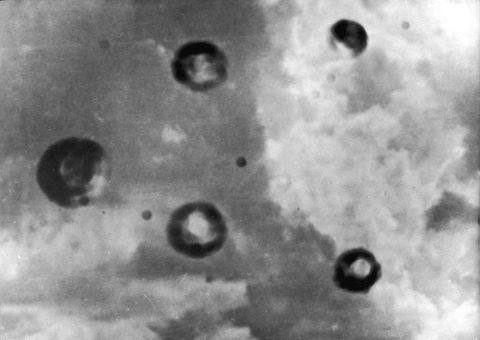A new nonprofit will explore what the U.S Navy calls “Unidentified Aerial Phenomena” (UAPs), according to Motherboard. Backed in part by Silicon Valley investors, UAP eXpeditions hopes to “field a top-notch group of uber-experienced professionals providing the public service of field testing new UAP related technologies.”

The nonprofit is registered to
a man named Kevin Day, a former U.S. Navy Chief Petty Officer and radar
operator whose time in service has influenced his new organization.
While serving in the Nimitz Carrier Strike Group on the USS Princeton in 2004, Day experienced the “Nimitz UFO Incident,”
which concerned a "whitish oval object, about the size of a commercial
plane, chased by two Navy F/A-18F fighter jets from the aircraft carrier
Nimitz off the coast of San Diego," according to a 2017 New York Times report.
Day is focused on UAPs occurring along the Pacific Coast, it seems. A company white paper that Motherboard
obtained asks if "fleets of UAP 'migrate' from Catalina Island to
Guadalupe Island with a certain frequency," and if so, "how well do
whale songs correlate, if at all, to UAP appearances?”
There have been other UAP investigative groups, of course.
The Center for UFO Studies and the Mutual UFO Network, among others, are alive and functioning. But those groups probably don't employ people like Dr. Kevin Knuth,
a former scientist from NASA’s Ames Research Center, current associate
physics professor at the University of Albany, and key member of UAP
eXpeditions.
Knuth tells Motherboard
the group is still in early phases, but "the goal of the expedition is
to give us some ground truth. We aim to try to observe these objects
directly, and record them using multiple imaging modalities.”
To that end, in August, Knuth was the lead author of a paper that examines "a handful of well-documented encounters, including the 2004 encounters with the Nimitz
Carrier Group off the coast of California." In the paper, Knuth and his
fellow authors look at the flight patterns of these UAP sightings and
determine that the "observed flight characteristics of these craft are
consistent with the flight characteristics required for interstellar
travel. That is, if these observed accelerations were sustainable in
space, then these craft could easily reach relativistic speeds within a
matter of minutes to hours and cover interstellar distances in a matter
of days to weeks, proper time."
From funders on
down, the wide-ranging group uniting behind UAP eXpeditions seems to
have one goal: raise the level of UAP inquiry.
“The
failure to study these phenomena scientifically has resulted in a state
of ignorance, which is unacceptable considering the aviation safety
issues that have been reported by the U.S. Navy,” Knuth tells Motherboard.David Grossman
Source
No comments:
Post a Comment
Note: Only a member of this blog may post a comment.